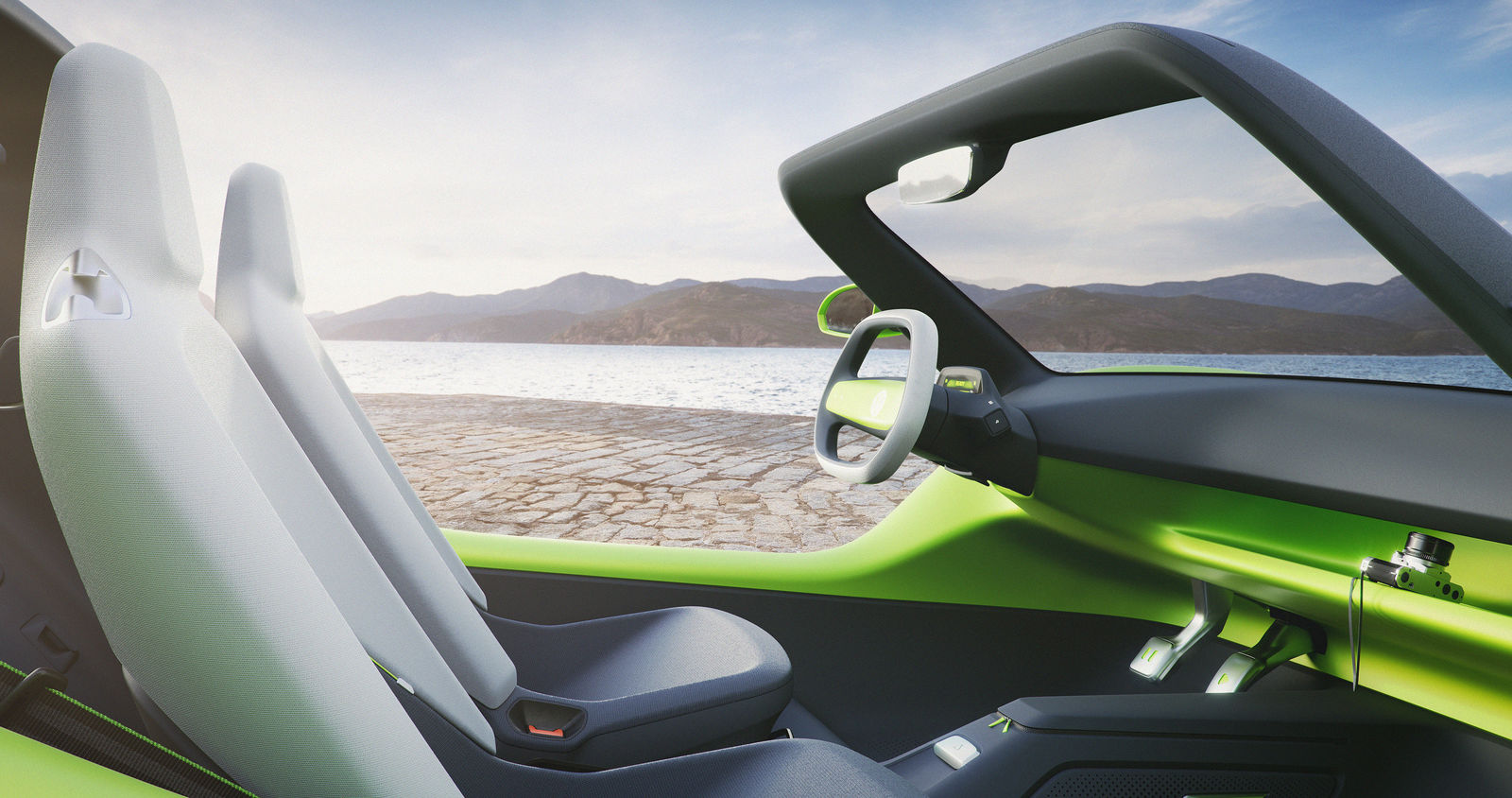Resilient open space. The world of the 60s dune buggies and the new era of electric mobility merge on board the ID. BUGGY into a retro-free interpretation of the classic. The minimalist interior is characterised by easy handling and waterproof materials. The clean surface design, like the exterior, is resilient. All elements surrounding the exterior are a continuation of the body painted in Fern Green. Colour-coordinated: the upper areas of the backrests in Fern Green Accent. The majority of the interior trim is finished in Grey Tech Blue as a robust soft-touch paint. They withstand the drive on the beach unscathed like a summer rain shower in the city. This is particularly true for the floor plate with anti-slip knobs. The driver and passenger sit on integral seats; headrests and belt guides are integrated into the backrests. They also have an unusually large amount of space, as the ID. BUGGY – despite its modular shortened wheelbase – also has the typical large open space of the ID. Family due to its compact electric drive and axles arranged further to the outside. This open space always provides room that is about one class above that of comparable cars with a conventional drive.
Hexagon steering wheel. The driver takes hold of the multifunction steering wheel (flattened hexagon) with controls in the crossbar (in Fern Green Accent). The controls react to touch (capacitive), but at the same time light pressure is required to prohibit accidental activation of functions. The Phone and Media functions are controlled using illuminated fields. The outer rim of the steering wheel is covered with water-repellent leather (Nappa Silver Grey colour). The inner rim is designed in Grey Tech Blue. This dark blue soft-touch paint also characterises the luggage compartment at the rear, where the load is secured with adjustable tensioning straps.
Digital instruments. The minimalistic digital cockpit has been designed to match the character and design of the ID. BUGGY: With the “Hey you” display in the cockpit, the concept car greets its driver and draws attention to the fact that it is ready for operation. The Volkswagen designers and engineers have kept the entire operating logic intuitive. Some simple examples: if the driver changes the gear position (D, N or R) by clicking a small wheel on the right side of the steering column forward or backward, this gear change is displayed as a rotational movement directly in the Digital Cockpit – the clicking motion and visualisation unite. Another example of intuitive operating logic is the pedal cluster: The triangular arrow symbol for “Start”, as known from consumer electronics, is incorporated in the accelerator pedal, while the brake pedal is provided with a vertical double bar for “Stop”. Symbols that are understood worldwide.
